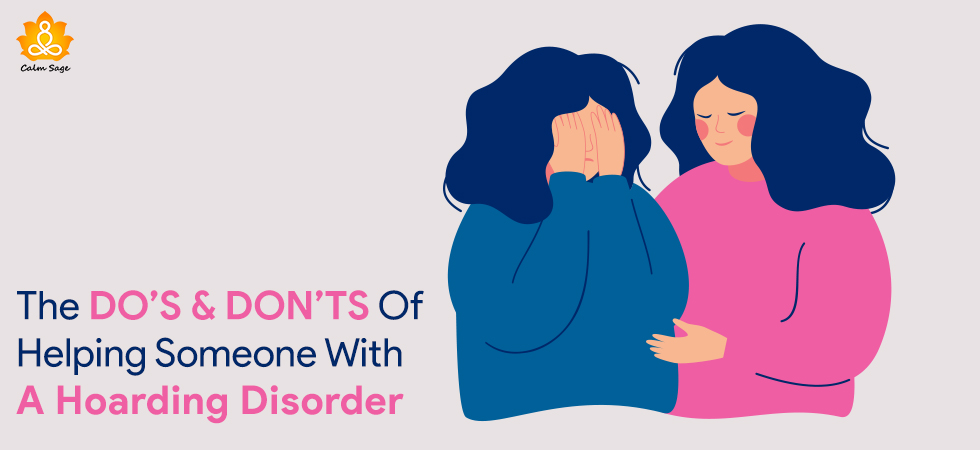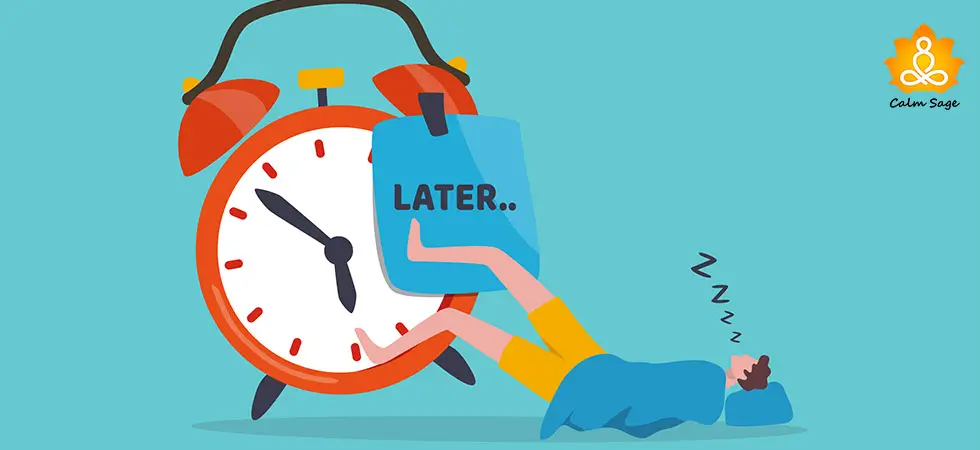What Is Hoarding Disorder: Do’s & Don’ts of Helping Someone

Hoarding disorder is a real and serious mental health condition that can be frustrating and difficult if you’re helping someone with a hoarding disorder. Someone dealing with a hoarding problem has an unhealthy attachment to their belongings – whether they are of value or not.
People with hoarding disorder feel comfortable storing things but when or if they try to discard those belongings, they feel stressed. This behavior can lead them to live in a cluttered, unsafe, and unhygienic environment which can take a toll on their mental health, physical health, family, and work life.
If a friend or a family member of yours is struggling with a hoarding problem, it is possible that you might feel overwhelmed. It can be frustrating and challenging to see or live with someone with a hoarding disorder.
In this article, we’ll explore the basic dos and don’ts and how to help someone with hoarding.
Also Read: Hoarding Disorder: Causes, Types, And How-To Help
A Brief Overview Of Hoarding Disorder
Hoarding disorder is a disorder wherein a person feels extreme psychological and emotional distress or difficulty in parting or discarding their possessions. People with this disorder feel a need to save their belongings and the thought of getting rid of them might make them feel anxious.
Hoarding disorder is a serious and real mental health condition that can lead to dangerous and unsafe living conditions, poor physical health, and poor personal hygiene.
The symptoms of this disorder can range from mild to severe. Hoarders have an extreme attachment to inanimate objects and can experience severe anxiety when thinking about discarding them.
Sometimes, the symptoms of hoarding disorder can be related to depression (lack of energy to clean and maintain cleanliness) or symptoms of obsessive-compulsive disorder.
Symptoms that are unique in hoarders can be:
- Purchasing and collecting things regardless of their value or worth
- Experiencing extreme distress over the idea of discarding or getting rid of their possessions
- Collecting things to a point where storing them becomes impossible (like stacking newspapers on the floor or any other flat surface)
- Poor organizational skills
- Arguing with others who try to help them cleanout
If the symptoms of hoarding increase, the person may experience anxiety and isolation among other health issues. If you know someone who’s experiencing the above symptoms, then it is recommended you help them seek professional help.
Many people believe that collecting and hoarding is a similar thing and while it may look like it, they are completely different situations. Collecting can turn into hoarding when items collected over time start to take up almost all of a person’s living space.
Also Read: Effects Of Social Isolation On Mental Health
How To Help A Hoarder – The Do’s & Don’ts
Do’s
1. Educate yourself about the disorder. Hoarding disorder is a complex condition and not many TV shows portray the right or accurate image of someone with a hoarding problem. You can learn about hoarding disorder on websites such as NAMI or ADAA (Anxiety & Depression Association of America).
2. Encourage your friend or family member to seek help from a professional. Try not to force the other person to get help. Going against their wishes is not the right way but you can encourage them or help them find a therapist that can help them.
3. Focus on them and not on their hoard. Hoarding disorder is not always about the things or objects a person hoards. You need to understand what is causing your friend to hoard. Sometimes it’s the factors or an underlying disorder that may be causing such behavior.
4. Listen to them with an empathetic ear. When someone is struggling with a hoarding disorder, they live in a fear of judgment from others. You, as a supporter, should be someone to whom they can talk without the fear of being judged.
5. Help them with their belongings only when they ask for it. Help them instead of doing it for them. If they ask, you can accompany them to support groups or ask their therapist how to help them further.
6. Set reasonable limits and expectations. Hoarding can’t disappear overnight. Recovery is a long process but it can become easy if you set realistic goals.
7. Celebrate small successes. Success – big or small – can be very important to someone who is struggling with hoarding disorder. Notice the positive changes and highlight them. This will encourage them to move further on the road to recovery.
Don’ts
1. Don’t touch or remove their belongings without their permission. While it may look like getting rid of the clutter will help them but in hindsight, it can set them back from any progress. Discarding their possessions without their consent can cause them severe emotional distress.
2. Don’t expect progress immediately. To a hoarder, everything in their possession is valuable and the process to clean their clutter can be difficult for them. Hoarding is a complex condition and it may take weeks and even years to make any considerable progress.
3. Don’t engage or enable their hoarding behavior. If someone with a hoarding problem can’t control their behavior and actions, then it is up to you to help them manage their behavior. Try not to add to their clutter. If you can, avoid gifting them with anything that will eventually end up in their hoard.
4. Don’t clean up after them. If you’re cleaning after someone who is struggling with hoarding disorder, it will keep them from addressing their problem and seek help.
5. Don’t expect much. A person with hoarding disorder may find it challenging to clear out their space and they might struggle with therapy as well. Just like any other addiction and mental health problems, hoarders may also experience setbacks. Support them and be patient.
Seeking Professional Help
Seeking professional help at first can seem daunting and challenging but it is an effective way to address mental health conditions. There are online therapy resources where you can find professional and licensed therapists and counselors.
Also Read: The Importance Of Therapy In Your Life
Therapy techniques like CBT can prove useful and effective in helping someone with a hoarding disorder. CBT can help address the issues causing people to hoard and help them overcome the feelings, thoughts, and behaviors that are causing them distress.
Helping someone with a hoarding disorder can be frustrating and taxing, so make sure you’re taking care of yourself as well. Join a support group for families with hoarding disorders or seek therapy for yourself.
For additional support and help, you can always contact us on our social media platforms or write to us at info@calmsage.com.
Take care and stay safe!




















